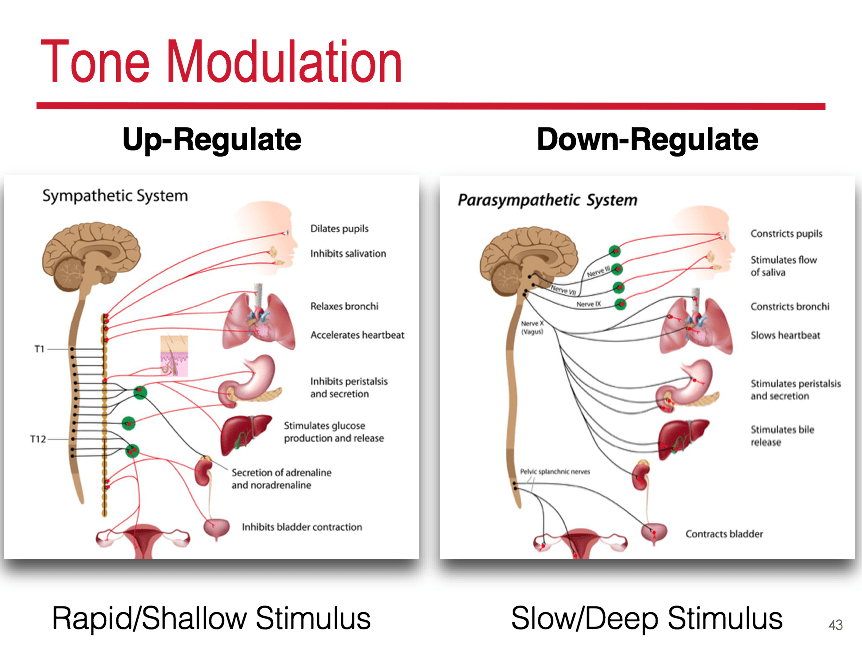An overview of systematic reviews on the subject would suggest not (Roura et al 2021). The effects can be very variable, or heterogeneous, between individuals. While it is possible that effect patterns may exist depending on gender, technique, and body region the most evidenced factors are ones of a contextual nature which can also be explained using the overused term ‘placebo’ to account for the influence of conditioning and patient expectation.
This broader consideration of the intricacies of the therapeutic encounter is supportive of the therapist who takes the time to make sure their patient is relaxed and psychologically aligned with the treatment approach.
As a clinical example. The next time you have the chance to help a patient suffering from persisting back pain, consider the fact that their autonomic nervous system (ANS) may be out of balance with the sympathetic nervous system (SNS) dominating. This is commonly known as the fight or flight response. Our time with the patient offers an opportunity to dampen this response and stimulate the parasympathetic nervous system (PNS) to redress the balance.
One measure of ANS response is heart rate variability (HRV). Research indicates that people with chronic low back pain have a significant reduction in HRV, with sympathetic predominance compared to healthy controls (Bandeira et al 2021).
We will be using this information to further build upon the importance of the whole person approach during manual therapy and movement as part of our Tape, Pod, Blades courses.
I look forward to discussing this further with our future students.
Daniel Lawrence
RockTape
@ThePhysioChannel
References:
Bandeira, P.M., Reis, F.J., Sequeira, V.C., Chaves, A.C., Fernandes, O. and Arruda-Sanchez, T., 2021. Heart rate variability in patients with low back pain: a systematic review. Scandinavian Journal of Pain.
Roura, S., Álvarez, G., Solà, I. and Cerritelli, F., 2021. Do manual therapies have a specific autonomic effect? An overview of systematic reviews. PloS one, 16(12), p.e0260642.
